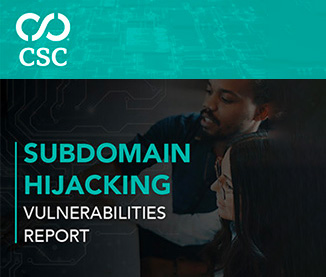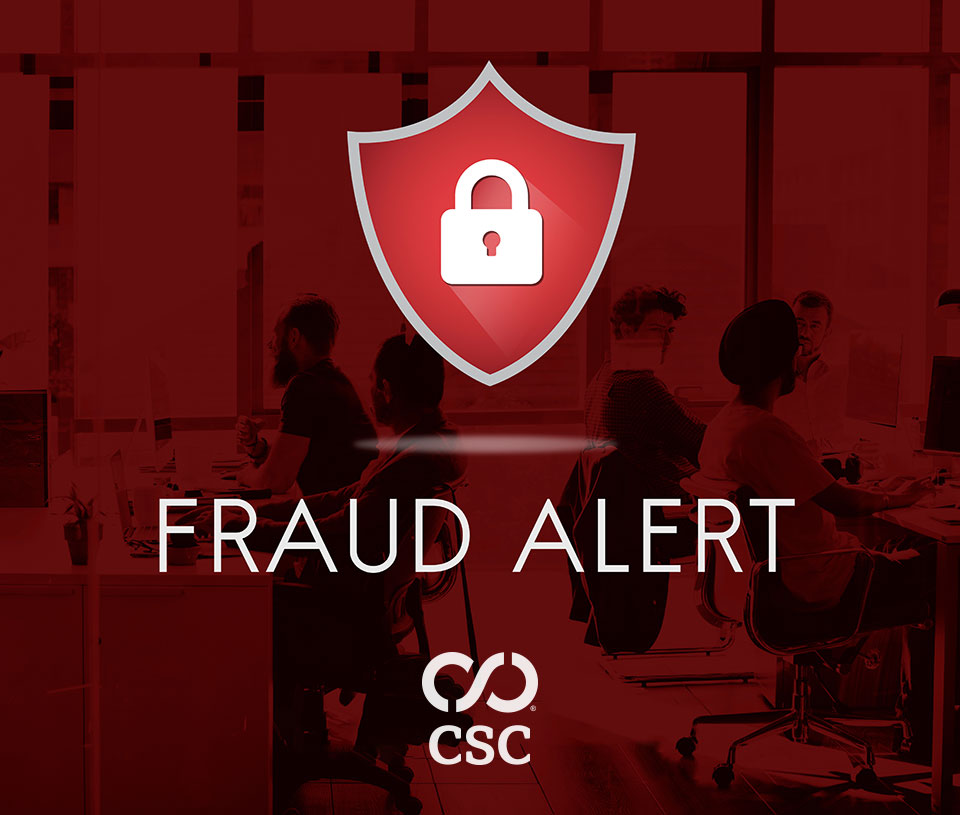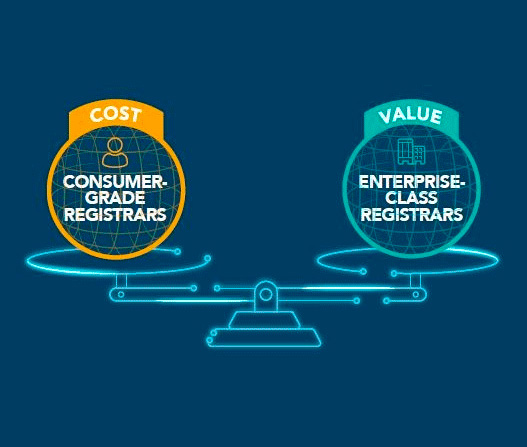
Brand Protection |
Sponsored by |

|




 Part 2: How do I choose the right option for my brand? In my previous article, I discussed the question of how to represent .brand domains in advertising. As you can imagine, it's a balancing act -- stimulating awareness of the domain, creating the desired customer behavior of the future using .brands, whilst ensuring that we are considerate to the fact that .brands are yet to hit mainstream awareness. Sounds simple right? more
Part 2: How do I choose the right option for my brand? In my previous article, I discussed the question of how to represent .brand domains in advertising. As you can imagine, it's a balancing act -- stimulating awareness of the domain, creating the desired customer behavior of the future using .brands, whilst ensuring that we are considerate to the fact that .brands are yet to hit mainstream awareness. Sounds simple right? more
 Social and Digital Marketing are two of the fastest growing, and arguably the most important, pieces of branding today. According to eMarketer, 2017 digital marketing expenditures will account for 38.4% of total ad spending and are projected to be almost 45% by 2020. This is double what they were just a few years ago and growth doesn't seem to be slowing down. more
Social and Digital Marketing are two of the fastest growing, and arguably the most important, pieces of branding today. According to eMarketer, 2017 digital marketing expenditures will account for 38.4% of total ad spending and are projected to be almost 45% by 2020. This is double what they were just a few years ago and growth doesn't seem to be slowing down. more
 In The Limits of Filtering, Evan Engstrom and Nick Feamster argue eloquently that the costs of a "takedown-staydown" system to defend against copyright infringement would be prohibitive for online service providers (OSPs) and therefore deprive OSPs of otherwise interested investors. I agree that Engstrom and Feamster raise some valid points, particularly including that content recognition technologies are not perfect... However, we must also remember that the current DMCA regime imposes significant costs... more
In The Limits of Filtering, Evan Engstrom and Nick Feamster argue eloquently that the costs of a "takedown-staydown" system to defend against copyright infringement would be prohibitive for online service providers (OSPs) and therefore deprive OSPs of otherwise interested investors. I agree that Engstrom and Feamster raise some valid points, particularly including that content recognition technologies are not perfect... However, we must also remember that the current DMCA regime imposes significant costs... more
 There are no gatekeepers to prevent registrants from acquiring domain names incorporating marks that potentially violate third-party rights. Anyone anywhere can acquire domain names composed of words and letters in languages not its own through a registrar whose registration agreement is in the language of the registrant. For example, a Chinese registrant of a domain name incorporating a Norwegian mark as in <statoil.store> in which Complainant requests the proceeding be in English notes that Chinese is not an official language in Norway. more
There are no gatekeepers to prevent registrants from acquiring domain names incorporating marks that potentially violate third-party rights. Anyone anywhere can acquire domain names composed of words and letters in languages not its own through a registrar whose registration agreement is in the language of the registrant. For example, a Chinese registrant of a domain name incorporating a Norwegian mark as in <statoil.store> in which Complainant requests the proceeding be in English notes that Chinese is not an official language in Norway. more
 The Uniform Rapid Suspension System (URS) is designed to get a domain name suspended, but in some cases this dispute policy can be used to help get a domain name transferred. It's an uncommon result but one that trademark owners may want to keep in mind. The suspension remedy is often viewed as the greatest limitation of the URS. Trademark owners that want to have a domain name transferred typically file a complaint under the Uniform Domain Name Dispute Resolution Policy (UDRP) instead of the URS - but, the UDRP is more expensive and time-consuming. more
The Uniform Rapid Suspension System (URS) is designed to get a domain name suspended, but in some cases this dispute policy can be used to help get a domain name transferred. It's an uncommon result but one that trademark owners may want to keep in mind. The suspension remedy is often viewed as the greatest limitation of the URS. Trademark owners that want to have a domain name transferred typically file a complaint under the Uniform Domain Name Dispute Resolution Policy (UDRP) instead of the URS - but, the UDRP is more expensive and time-consuming. more
 The lexical material from which trademarks are formed is drawn from the same social and cultural resources available to everyone else, which includes domain name registrants. Since trademarks are essentially a form of communication, it is unsurprising that a good number of them are composed of common terms (dictionary words, descriptive phrases, and shared expressions) that others may lawfully use for their own purposes. more
The lexical material from which trademarks are formed is drawn from the same social and cultural resources available to everyone else, which includes domain name registrants. Since trademarks are essentially a form of communication, it is unsurprising that a good number of them are composed of common terms (dictionary words, descriptive phrases, and shared expressions) that others may lawfully use for their own purposes. more
 The Uniform Rapid Suspension System (URS) -- which allows a trademark owner to suspend certain domain names, especially those in the "new" gTLDs -- was designed as a quicker and less-expensive alternative to the Uniform Domain Name Dispute Resolution Policy (UDRP). As I've written frequently before, there are significant differences between the URS and the UDRP. One of those differences is how long a typical proceeding lasts. more
The Uniform Rapid Suspension System (URS) -- which allows a trademark owner to suspend certain domain names, especially those in the "new" gTLDs -- was designed as a quicker and less-expensive alternative to the Uniform Domain Name Dispute Resolution Policy (UDRP). As I've written frequently before, there are significant differences between the URS and the UDRP. One of those differences is how long a typical proceeding lasts. more
 We had high hopes that the Domain Name Association's Healthy Domains Initiative (HDI) wouldn't be just another secretive industry deal between rightsholders and domain name intermediaries. Toward that end, we and other civil society organizations worked in good faith on many fronts to make sure HDI protected Internet users as well. Those efforts seem to have failed. more
We had high hopes that the Domain Name Association's Healthy Domains Initiative (HDI) wouldn't be just another secretive industry deal between rightsholders and domain name intermediaries. Toward that end, we and other civil society organizations worked in good faith on many fronts to make sure HDI protected Internet users as well. Those efforts seem to have failed. more
 The domain name system is in good health. But it's about to get even better. The Domain Name Association (DNA), the Internet domain industry's trade association, undertook an effort in 2016 it named the Healthy Domains Initiative (HDI). It's an ambitious, self-motivated effort to build on the DNS' already secure and stable platform and meet select challenges head-on, before they develop. more
The domain name system is in good health. But it's about to get even better. The Domain Name Association (DNA), the Internet domain industry's trade association, undertook an effort in 2016 it named the Healthy Domains Initiative (HDI). It's an ambitious, self-motivated effort to build on the DNS' already secure and stable platform and meet select challenges head-on, before they develop. more
 Domain names may be confusingly similar to trademarks or even identical or but not infringing. This is particularly true of trademarks acquired later than the allegedly infringing domain names ArcBest Corporation v. Domains By Proxy, LLC, Registration Private / Vernon Troupe, D2016-2381 (WIPO January 13, 2017) (<arcbest.com>, in which "ark" is a contraction of "Arkansas"), but it can also apply to marks composed of common element that predate domain name registration... more
Domain names may be confusingly similar to trademarks or even identical or but not infringing. This is particularly true of trademarks acquired later than the allegedly infringing domain names ArcBest Corporation v. Domains By Proxy, LLC, Registration Private / Vernon Troupe, D2016-2381 (WIPO January 13, 2017) (<arcbest.com>, in which "ark" is a contraction of "Arkansas"), but it can also apply to marks composed of common element that predate domain name registration... more
 I firmly believe that we need to protect any form of intellectual properties (IP) built by one through hard and honest work. At the same time, I also believe that several of the current methods of protecting IP, such the as the copyright laws, patent systems and legislations, are not evolving fast enough in order to protect IP and avoid hindering the path of creativity and innovation. more
I firmly believe that we need to protect any form of intellectual properties (IP) built by one through hard and honest work. At the same time, I also believe that several of the current methods of protecting IP, such the as the copyright laws, patent systems and legislations, are not evolving fast enough in order to protect IP and avoid hindering the path of creativity and innovation. more
 There are several perspectives from which one can give various answers to the question of 'what are domain names?'. Originally the domain name system started and continues to be a human-friendly way of addressing to a set of machines or specific machine connected to the Internet. Hence, from the technical perspective, a domain name is simply an address consisting of a combination of alphanumeric and symbols to communicate with a machine which also happens to be hosting certain services in form of data and information on it. more
There are several perspectives from which one can give various answers to the question of 'what are domain names?'. Originally the domain name system started and continues to be a human-friendly way of addressing to a set of machines or specific machine connected to the Internet. Hence, from the technical perspective, a domain name is simply an address consisting of a combination of alphanumeric and symbols to communicate with a machine which also happens to be hosting certain services in form of data and information on it. more
 Although filing fees in domain name disputes are usually paid for by the trademark owner that files a complaint, the Uniform Rapid Suspension System (URS) contains a little-noticed provision that, in large cases, requires the domain name registrant to pay a fee to defend itself. The so-called "Response Fee" is only required in URS cases that include 15 or more disputed domain names. more
Although filing fees in domain name disputes are usually paid for by the trademark owner that files a complaint, the Uniform Rapid Suspension System (URS) contains a little-noticed provision that, in large cases, requires the domain name registrant to pay a fee to defend itself. The so-called "Response Fee" is only required in URS cases that include 15 or more disputed domain names. more
 The threshold for an actionable claim under the Uniform Domain Name Dispute Resolution Policy (UDRP) is a trademark in which complainant has rights. "Rights" means a trademark that could have been newly minted a moment before filing the complaint. This is different from the Anticybersquatting Consumer Protection Act (ACPA) in which trademark owners must have a "mark that is distinctive at the time of registration of the domain name." The difference is important... more
The threshold for an actionable claim under the Uniform Domain Name Dispute Resolution Policy (UDRP) is a trademark in which complainant has rights. "Rights" means a trademark that could have been newly minted a moment before filing the complaint. This is different from the Anticybersquatting Consumer Protection Act (ACPA) in which trademark owners must have a "mark that is distinctive at the time of registration of the domain name." The difference is important... more
 Proceedings under the Uniform Domain Name Dispute Resolution Policy (UDRP) can be heard by either a one- or three-member panel. Here are eight important facts that every complainant (trademark owner) and respondent (domain name registrant) should consider when deciding whether to select one or three members... Either party - complainant or respondent - has an opportunity to select a three-member panel... more
Proceedings under the Uniform Domain Name Dispute Resolution Policy (UDRP) can be heard by either a one- or three-member panel. Here are eight important facts that every complainant (trademark owner) and respondent (domain name registrant) should consider when deciding whether to select one or three members... Either party - complainant or respondent - has an opportunity to select a three-member panel... more